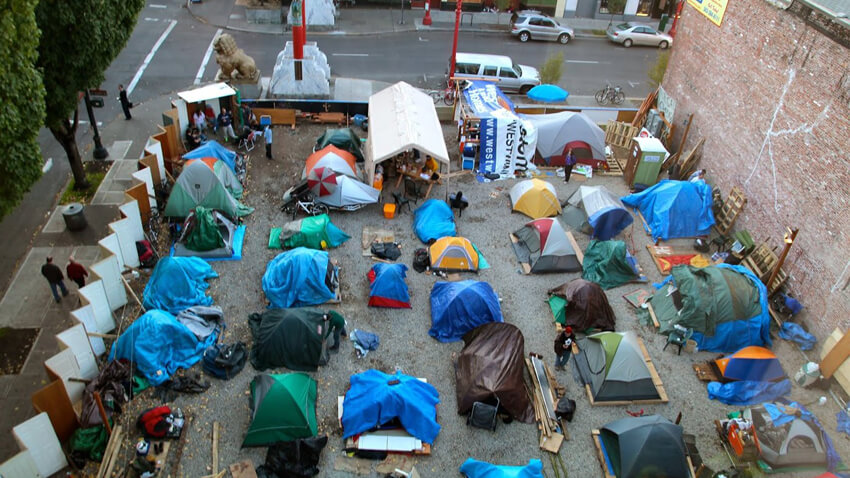Homeless encampments are now fixtures all throughout the country — in freeway underpasses, industrial zones, business districts, neighborhoods, children’s playgrounds, parking lots, and residential neighborhoods.
In 2017, Los Angeles had 222 tent encampments.[1] Seattle had over 400 tent encampments.[2] In the same year, California’s Caltrans cleaned up over 7,000 homeless encampments throughout the state’s roads at a cost of $10 million, a 34% increase compared to the previous year.[3]
When cities get enough complaints from citizens, officials tear down the encampments and haul away the trash and bring in hazmat crews to try and sanitize the area.
In 2018, Sacramento cleared out 741 homeless camps[4] and removed over 1 million pounds of trash along their river parkway. In a single encampment under a bridge, over 32,000 pounds were removed[5]
But with no place to live, the homeless just move down the road, and the process starts over again. It’s a never-ending cycle.
[1] http://www.latimes.com/local/lanow/la-me-homeless-how-we-got-here-20180201-story.html
[2] https://www.usnews.com/news/best-states/washington/articles/2017-11-06/homeless-explosion-on-west-coast-pushing-cities-to-the-brink
[3] http://www.dot.ca.gov/milemarker/docs/articles/2018/Q1/MM-2018-Q1-homeless-camps.pdf
[4] https://www.sacbee.com/news/local/homeless/article212213364.html



